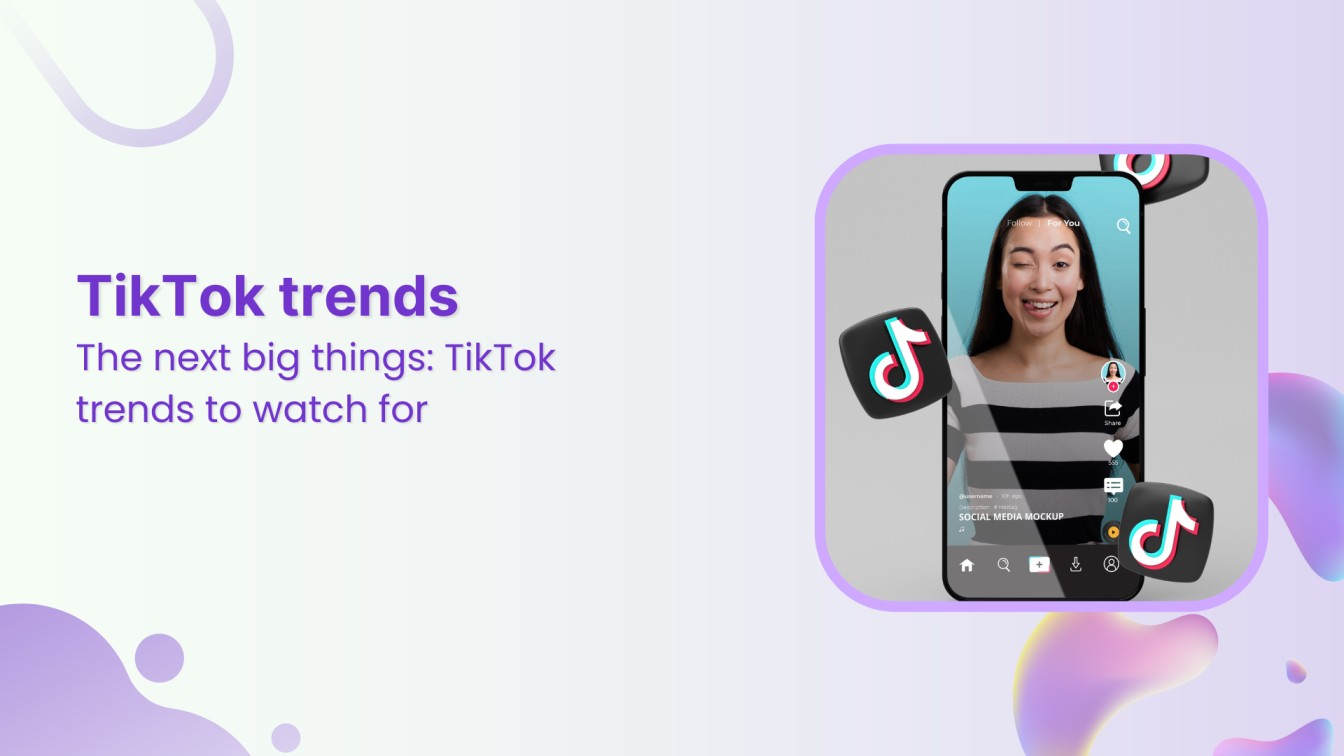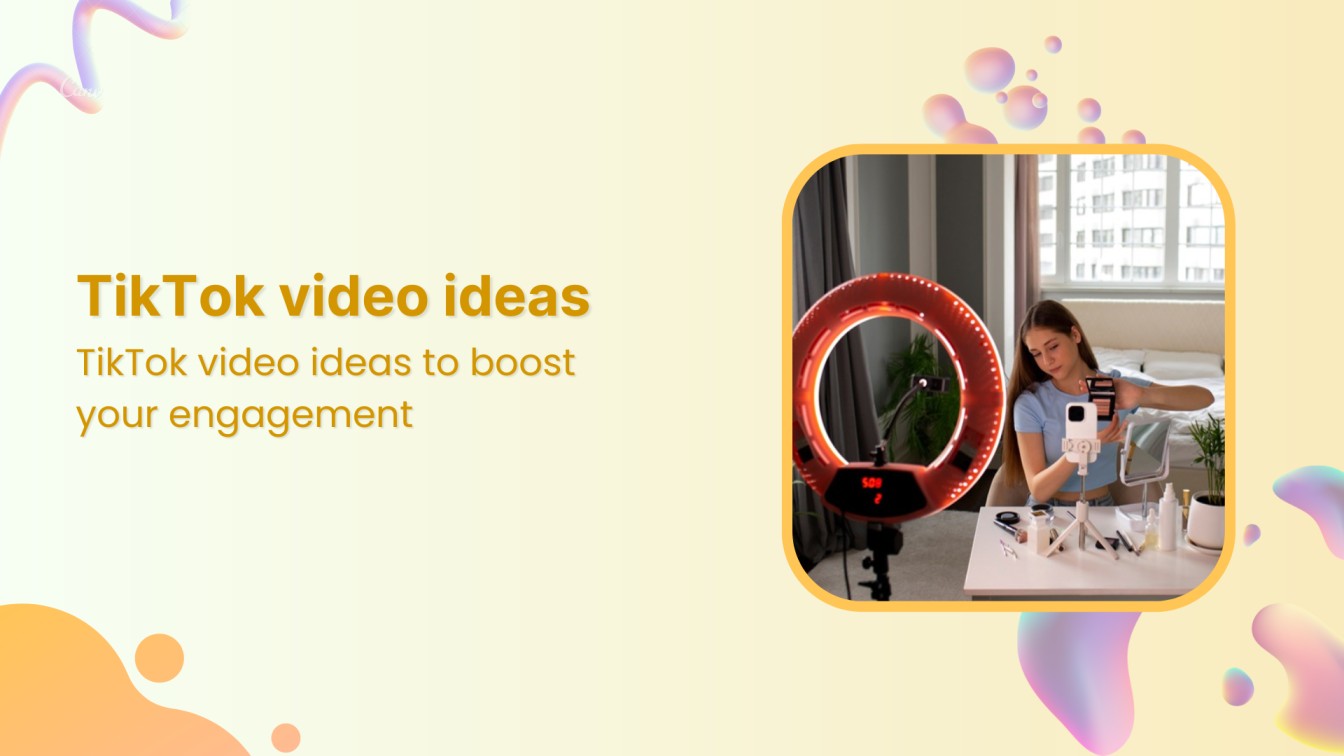Wondering how to level up social media marketing for your restaurant.
If you’ve ever followed a restaurant on social media, you probably already have an idea of how to market your restaurant.
For greater exposure, sharing deals, and helping convince diners that their food is worth their order.
In fact, 36% of diners in the US follow restaurants on social media. 39% of the diners mainly do so to determine whether they should visit the restaurant or order food from them. Similarly, 30% of millennial diners rely on social media reviews for choosing a place to dine in.
Meaning: you need to start working on your social account(s) instead of leaving them to gather dust.
To help you, we’ve put together this guide on marketing strategies for restaurants. We’ll look at 11 of the diners having an A-game when it comes to social media marketing and shares best practices based on what’s working for them. In the end, you’ll leave feeling packed with marketing ideas.
Let’s get started.
Social media marketing for restaurants: The basics
Before we dive in, here’s a look at the four core principles you need to be following as you refine your marketing tactics for restaurants on social media.
1. Focus on visual-first content
High-quality visuals tell a memorable story. With food, in particular, appetizing pictures are often the driving force in hooking your audience’s attention and helping them decide in your favor.
This leads you to two actionable tasks:
- Pick a visual-first platform (think Instagram) if you already don’t have a social profile there.
- Hire a professional photographer to start taking enticing pictures of the food available at your diner.
Short on resources? Read this guide for food photography tips.
2. Refine your brand voice
If you already don’t have a brand voice or have one that needs polishing, now’s the time you take the job seriously. Why? Because eateries with an ace social media game stand out with their voice – as you’ll learn in the examples below.
So start with asking yourself the following questions:
- If our restaurant were a person – how would it talk?
- Who is our target audience and what language do they speak?
- How do we currently talk to our customers? Does it resonate with our audience?
Finding or refining your brand voice isn’t the job of a lone wolf. So it’s best you get your team together and brainstorm 2-3 brand voice traits that show your restaurant’s personality and will also resonate with the diners that you target.
Make sure you create a brand voice chart that lists these voice traits and example sentences of how to write something. Put in examples of how to not write/say something as well for additional clarity.
3. Gather all content that shows social proof
This includes user-generated content on social, online reviews, and any testimonials that diners might have for you.
This social proof-showing content is fodder for your online marketing – mainly doing the job of convincing people.
Essentially, social proof is anything that tells people others are loving your diner. It makes people think ‘if someone like me is liking their food, there’s a good chance I will too.’ By instilling this thought process, social proof helps businesses get more people to buy from them.
Still unsure? Take this: 94% of US diners decide whether to go to a diner based on their online reviews according to a TripAdvisor survey. That’s how important reviews are for online marketing for restaurants.
Besides reviews, you’ll also need user-generated content (UGC). These are pictures that your customers take with your food. For example, someone sharing their Starbucks’ morning coffee is UGC content for Starbucks
Therefore, track all your social tags and mentions. And, if there’s someone sharing food that they had at your café, reach out to them for their permission to share that photo.
4. Engage, Engage, Engage
The best marketing for restaurants on social media? Interacting with their audience.
This means instead of keeping it zipped, respond to the comments on your posts. And, get back to your messages as soon as possible. Quickly responding to queries can help you win more business while meeting consumer expectations.
In fact, 83% of consumers expect businesses to respond on social media in one day or less.
For diners, the expected turnaround time is even shorter as several people reach out to learn about time-sensitive discounts, open and close timing, home delivery services, dish availability, and the like – all questions that help them make their decision on the spot.
Find it challenging to answer all the questions pouring in across your social profiles? Use a shared inbox to quickly and effectively respond to messages.
ContentStudio’s shared inbox provides you one place where all messages come through so you don’t have to jump from Instagram to Twitter to Facebook in a wild goose chase to get back to customer questions.
Instead, you can have a streamlined inbox that pools messages from all social channels that you use for your restaurant.
But that’s not even the best part. So what is it? You can assign the job to different teammates. Not only does this reduce your workload, but it also means that the best person to answer the question gets back to the message. Perfect, isn’t it?
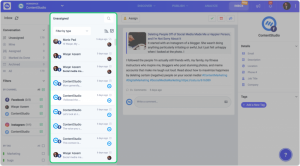


Social media marketing for restaurants: Best practices
With the foundational practices out of the way, let’s give you a rundown of marketing ideas for restaurants to improve your social media game.
1. Show your unique brand personality on social
How so? By using your brand voice. Take Wendy’s Twitter account, for instance.
Verified tweets for verified eats. There’s only one top dog in the spicy nugget game, and that’s verified. #WendysSpicyNuggs
— Wendy’s???? (@Wendys) August 10, 2021
Each of their tweets uses a sassy voice, which is their brand voice. This helps them stand out from the eatery crowd as well as leave a unique and memorable impression on new profile visitors.
Their brand voice also helps create a fun experience for their customers, which breeds loyalty.
To top that, Wendy’s also uses the same voice to interact with its followers – something you should take notes on.



2. Take the time to preplan your social feed
Planning your social media content helps you save time, leaving room for engaging with your followers.
More importantly though, preplanned content helps you visualize how your social feed will look like and what it’d cover. This is especially helpful for a visual-first platform like Instagram where your grid (the way your posts are arranged) plays an essential role in attracting and retaining followers.
Look at Arby’s Instagram grid, for instance.
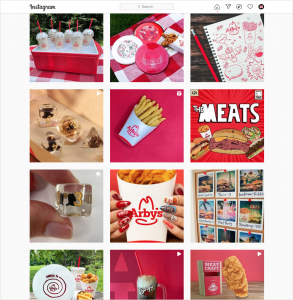


One look at it and you can tell the layout is planned to a tee as evident from the color theme and how each individual post complements one another as a whole.
So one of the top marketing ideas for restaurants is to plan their social feeds and content in advance. For Instagram, specifically, plan your layout grid and content for an engaging feed that offers a branded experience.
It’s also worth noting that Arby’s doesn’t rely on one type of visual. They feature a healthy balance of designed graphics, food pictures, videos, funny comics, and an Instagram carousel.
Their content planning also takes into account international holidays as in this post:



So in your planning, decide which visual formats you’ll use and which holidays are relevant to your audience, therefore, worth celebrating on social media.
You don’t have to plan each content piece though. Leave room for urgent announcements. And, before we move on to the next tip, here’s more on how to design your Instagram grid layout.
3. Post-engagement-driving content
In your content planning, it’s important you bear in mind engagement is a result of what you post (among other factors like the time you post, of course).
The million-dollar question, however, is, what sort of social content garners engagement? A few ideas:
-
-
- Giveaways
- Captions and tweets that ask questions
- Content that encourages people to tag their friends
- Posts that encourage people to share user-generated content (for an incentive)
-
Chow Milehigh paired up with the ViewHouse eatery to host an engagement-driving giveaway, for example.



Note this post is a good example of not just any giveaway, but an incentive-centered collaboration-based giveaway. The two restaurants give away a $100 gift card and share participation rules: like the post, follow both eating houses, and tag a friend too.
This is a great approach to growing followers and increasing your restaurant’s exposure. The latter happens as followers tag their friends in the post.
Other forms of content that drive engagement are memes and interactive posts. Memes are helpful, particularly, when they’re super relevant to your audience – they relate to it, therefore, engage with it.



Similarly, interactive content is content that gets people to comment. McDonald’s does this well here:
what should our sign say today? pic.twitter.com/BKGpoqC5YP
— McDonald’s (@McDonalds) August 30, 2021
In response to the comments, the fast-food restaurant made posters with what people suggested. Take a peep:
— McDonald’s (@McDonalds) August 30, 2021
Pro tip: Get your social media team to directly interact with your audience. This brings the human element out, helping you win more trust and drive better engagement. Look at Guillaume Huin, McDonald’s Head of Social, interacting with this post. In fact, you’ll find Huin engaging with other commentators frequently.
4. Jump on relevant trends
Creating memes and content for holidays is an effective way to stay fresh. Another way to do so? Creating content-based on the trending hashtags.
did it hurt? when u realized i’m not in charge of the menu
— McDonald’s (@McDonalds) September 1, 2021
The key here, however, is to only create content for trends that are:
- Relevant to your audience and
- Relevant to your restaurant (and what you stand for)
Without relevancy, there’s no point to jump on trends – doing so won’t get you any engagement.
5. Take a firm stance
Most of your audience expects you to be clear about your values – even take stands on social media.
Millennials, in particular, harbor these expectations with 46% expecting brands to be brave. 42% of Gen Z also have the same expectations. Overall, 68% of consumers expect brands to have clear values.
As for taking a stance, 31% and 22% of Gen Xers and Boomers anticipate brands to speak up on social issues. These expectations, however, grow based on consumers’ ethnicity. Here are the numbers of people expecting you to speak up:
-
-
-
- 69% of Hispanics
- 71% of LGBTQ+
- 79% of Asian Americans
- 82% of African Americans
-
-
Translation: if you serve these demographics, you’ll need to be clear on your values and what you stand for.
Papa John’s is a great example of a fast-food outlet that’s clear on what they stand for. It’s why they frequently volunteer or plan campaigns for various causes.



6. Diversify your content pool
We’ve lightly touched on this before. Let’s dig deeper now.
Essentially, the point to all the content that you create should be to drive conversations. You can do this with the help of memes, interactive, and trending content (as we’ve shared above). But there’s more.
Take Starbucks, for instance, they take a fun educational approach to their social media content:



The point is simple, you either educate your audience or entertain them, which makes entertainment and education the two broad pillars of content creation.
There’s also a third broad pillar and it is: informing your audience. It’s here that promotional content comes into the picture.
Another content type that’s essential for marketing for restaurants? User-generated content
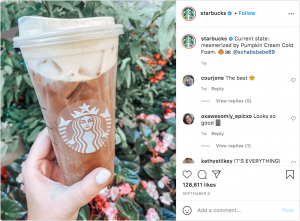


7. Announce deals and promotions
Alongside your marketing content, it’s essential you use social as a broadcast channel for all the mouth-watering deals your eatery offers.
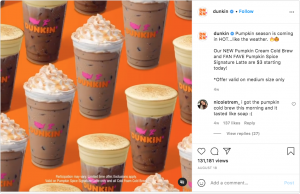


It’s important to mention here that you shouldn’t treat social as a broadcast, promotions-sharing channel only.
Maintaining a healthy mix of social proof content, promotional content, and entertainment content is the secret to winning at social media marketing for restaurants.
Pro tip: Create hype around new dish launches or offers to come during the season, for example. This gets your audience excited, which can help grow your engagement and sales.
Create eye-catchy promotional flyers to run social media campaigns and increase conversion rates easily. Use online flyer maker tools such as PhotoADKing, Visme, Canva, where you will get thousands of pre-defined templates for each category, which are very easy to edit in just a few clicks.
Here’s Dunkin doing the same. A day before launching their Pumpkin Lattes, they shared the post below to keep their audience on their toes.
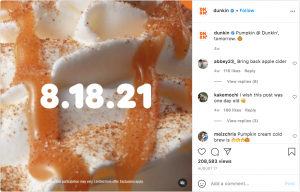


8. Leverage holidays for marketing
This is another one of the top-ranking marketing ideas for restaurants on social media.
When it comes to holidays and special events, people keep tabs on the hashtags. By offering holiday-centered discounts, giveaways, or running any campaign, you can get more eyeballs to your content. In fact, the right deals can get you more diners too.
Here’s Nando’s making the most of Mother’s Day celebrations for their US-based audience.
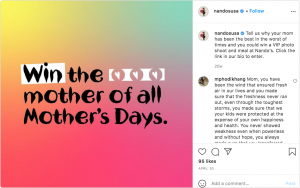


9. Write descriptive captions to entice consumers
Descriptive caption writing is one of the best marketing strategies for restaurants to employ.
The idea? To trigger your audience’s imagination. Starbucks chose to stoke their readers’ senses with a caption packed with concrete details of their Iced Apple Crisp Macchiato.
Their words: “The taste of caramelized apples, brown sugar, and spiced apple drizzle all baked into a cup. Introducing Iced Apple Crisp Macchiato.”
Now pair this with an enticing picture of the macchiato and it’s hard for a follower to not try the drink.
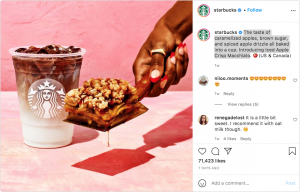


Jeni’s Ice Cream takes the same approach in this post by explaining how the flavor tastes – an effective way to make people order it on the spot.



10. Capture pictures that reflect ambiance too
This is great for reeling in diners who want to enjoy a great experience with good food. You can go all in about the experience you offer. Jeni’s Ice Cream did so in this post, for instance.



Or, you can take a subtle approach in your restaurant social media marketing plan as this restaurant did:
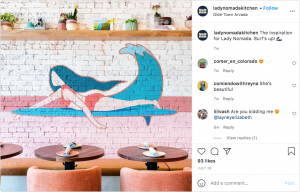


11. Feature reviews and behind the scenes content
Finally, share some social proof and your human side by posting customer reviews and behind the scene content, respectively.
Buffalo Wild Wings shares their review without coming across as obvious:



Take a similar approach. Share your excitement while presenting what others think of your food – giving followers another reason to visit your café or order from you.
As for behind-the-scenes content, this is content that shows the people behind your café, helping you gain your audience’s trust.
To this end, you can capture your chef in the process of cooking or share an employee spotlight feature. You can also show a team meeting in progress or the team celebrating milestones together.
Social media marketing for restaurants: The summary
So are you ready to level up your eatery’s social media game?
By following these tips, you’ll not only be able to run engaging social accounts for your restaurant but also attract more business in no time.
We’ll leave you with a quick summary of all the key tactics you need to be employing:
-
-
- Always be interactive. Reply to comments and get back to messages at your earliest.
- Hook your audience in with storytelling. Use high-quality visuals and write descriptive captions in your brand voice for this.
- Create content that does one of these: educates, informs, or entertains. Make sure your posts are a healthy mix of self-promotional content and interactive content.
- Plan engagement-driving campaigns for your social media. Host giveaways, ask questions, create relevant memes, share UGC and behind-the-scenes content, and jump on trends, events, and holidays.
- Diversify your content formats. Experiment with bite-size videos, high-quality food photography, branded GIFs, carousels, and funny comics among others.
-
Masooma Memon
Masooma Memon is a pizza-loving freelance writer by day and a novel nerd by night. She crafts research-backed blog posts and articles for small businesses and app companies who aim to employ quality content to educate and engage with their audience.



